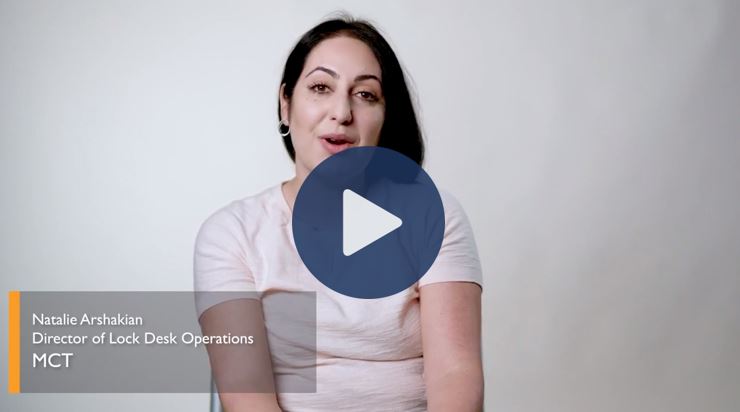We’ve reached a dubious point in this economic cycle where there are both fears of a recession that high rates could bring, and anticipation of the potential easing of interest rates that a recession would bring. As the Fed raises interest rates, the cost of mortgages has now reached levels not seen in the U.S. in decades, reducing demand and cooling home prices. The current 30-year mortgage rate sits at the highest level since 2002 and MBA mortgage applications have dropped to the lowest level since 1997. However, there is desire for affordability in a market where interest rates have gone up so much and we should see drastically increased refinance activity as soon as mortgage rates drop.

Rough Times for Mortgage
Let’s not mince words, it’s bad out there in the mortgage industry. There has been a relentless move up in rates and increased volatility associated with it. Originators are getting crushed and we have seen an increased prevalence of layoffs and closures. Existing home sales are tanking and there is next to no refinance volume, which remained through the last major rough patch for the mortgage industry in 2009-11. High home prices have been compounded through supply destruction: A decade of low interest rates and in some cases free money from the mortgage industry means many homeowners bought or refinanced into inexpensive mortgages, offering little incentive to refinance or sell their homes. Even if they’d like to sell their property and move, doing so is often prohibitively expensive unless they can afford an all-cash purchase or a substantial down payment.
Refinance Elasticity
Inventory, the listings of existing homes available for sale, is expected to remain low. If housing supply is limited, which encourages higher prices, and affordability pressures constrain potential homebuyers via elevated home prices and mortgage rates, home sales should remain sluggish. You can’t blame potential borrowers for their reluctance to purchase or refinance. What was originally a supply issue has now become an affordability issue. Mortgage rates rising from 3 to 7% has increased the average monthly borrower payment by 57%. People are sensitive to rates. Rate-and-term refinances have displayed rate elasticity (e.g., people aren’t saying they need 3.5% to refinance. Rates to 4.5% would mean massive refinance volume for all the loans originated this year), though those potential refinances are the reason it is so hard to originate and sell mortgages with points. The July MCTlive! Rate Lock Indices showed that with a slight decline in rates, rate-and-term refinances rose more than 11%.
The Fed and Housing Prices
The latest inflation measure from the U.S. government, an 8.4% annual increase in the Consumer Price Index (CPI), has cemented expectations that the Fed will hike interest rates by 0.75 percentage points at its meeting in November. Expectations are for an additional 75-basis point hike at the Fed’s December meeting. The Fed faces difficult policy decisions. The Fed’s strategy has been based on the idea that higher interest rates will lower inflation. Inflation has remained stubbornly high, increasing the odds that the Fed will overcorrect and push the economy past a “soft landing” and into a deeper recession, crashing the housing market in the process. If the Fed’s rate hikes crush the economy and freeze the housing market, rates will come down.
This economic cycle has been a big run up, but as we see payroll increases subside, housing prices should subside as well. The National Association of Realtors expects existing home prices in the US to fall 1.2% next year, bringing price levels back to about where they are right now, since NAR expects existing home prices to increase 9.6% overall by the end of 2022. The conservative increase of the conforming loan limit by several large companies to $700k in 2023 is an 8% increase. Statistics from Case-Shiller and FHFA show that house prices have remained solid and are up around 20% year-over-year as we get late into 2021. There have been some home price drops in certain metros recently, which is needed so the purchase market doesn’t go away. Fannie Mae’s latest Housing Sentiment Index showed that for the first time since the beginning of the pandemic, most respondents expect home prices to decline going forward, and sentiment sits at its lowest level since October 2011.
Current Secondary Market
On the secondary side, we’re firmly in a 6 coupon and our clients are experiencing wide bid-offer spreads and high costs of trading. It’s also standard to see illiquid market coupons. Historically, lower coupons that are 5 points under par are not liquid, but they have been liquid this year because Fed has been behind on buying the market coupon because the market has tanked every month. Now, it’s not like coupons at 101 are trading better, but we are seeing a 5 coupon in a 96 handle. The MBS market has relied on lower coupons trading well even into the low 90s and we should continue to watch that now that that primary liquidity provider is no longer in the market. Spreads have widened without daily Fed purchases, and though liquidity isn’t worse yet with the Fed’s exit of the space, it would be surprising if it didn’t get worse. There is no turning around in the near future towards QE, and the yield curve continues to invert, portending a recession.
If the Fed crushes it hard enough, the economy will revert to a deflationary environment. Economists like deflation less than inflation because nobody wants to buy anything when prices will be lower next month.
Best Practices
We understand the market that you’re going through. Your focus is on maximizing profitability to survive. Let us help you scrap for every basis point. Even though the headlines say, “Everything is down, down, down,” we have some recommendations. Be tight on your coupons on the trading side. Have a structural gFee to help with volatility. Focus on AOT, as pricing biasing upward makes the bid-offer spread free margin. For those that are cash sensitive, recycle trades diligently. Look into products like low down payment loans, refi+ programs, and EARRLS. Everything will average out. The mortgage industry has become a protected industry in the eyes of the government, so the housing market won’t be allowed to roll over. Stash cash, control expenses, retain and add high value team members, and you’ll come out on the other side with less competition. 
We’re Here to Help
With our hedge advisory services, our team of experts work with your secondary market staff to create a daily cycle of disciplines for successful pipeline management. Whether you are making the move to mandatory executions, seeking improvements to your mortgage pipeline management process, or considering a change in your hedge advisor, MCT’s Hedge Advisory blends technology and service to achieve your goals. As the industry leader in pull-through analytics and best execution with the highest staff-to-client ratio, lenders of every size trust MCT to manage risk and optimize profitability in their mortgage loan pipeline management. If you adhere to these practices in this tough environment, you are putting yourself in the best possible position. It’s worth exploring all execution options and talking to us, both for your bottom line and overall enterprise viability.
Related Articles:



